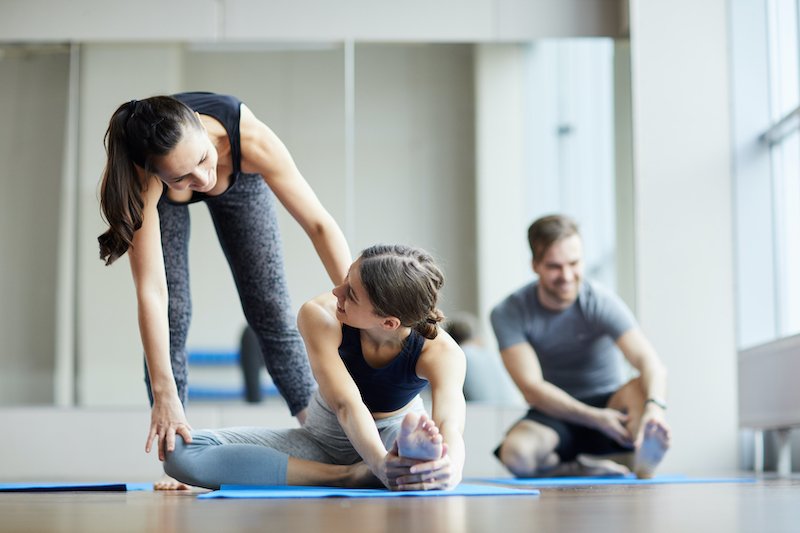
When it comes to learning and practicing the sacred art of yoga, transitions are as important as asanas. You might not know but the simple movement from one yoga asana to the next provides you a different type of mental and physical challenge. Moreover, knowing yoga transitions is equally important as this helps you stretch and strengthen every muscle in every yoga asana.
If you want to become a certified yoga instructor, you should enroll in yoga teacher training in Rishikesh to learn everything about yoga transitions. This training provides you theoretical and practical knowledge of transitions to deepen your yoga practice.
With that said, let us first understand a bit about yoga transitions.
Yoga Transitions – A Brief Intro
Yoga transitions refer to the poses or movements that help you move from one asana to the next. Similar to numerous yoga asanas, these serve a specific purpose. They help your body prepare for the next yoga pose and are important for maintaining structural integrity.
Given below are three solid reasons why learning about yoga transitions is important.
1. Body Alignment
Yoga transitions are quite beneficial when it comes to improving your body alignment. These encourage proper positioning of your body to help you practice yoga with safety and derive maximum benefits from the ancient art. Moreover, they help you move smoothly from one yoga asana to the next.
2. Advanced Preparation
Yoga transitions prepare your body for the next yoga asana. These warm up the essential muscles and help with proper form by stimulating the target muscle groups. It is this reason why every transition has an important place in yoga practice. You should enroll in yoga teacher training in Rishikesh to learn everything about yoga transitions.
3. Develop Strength
One major benefit of regular yoga practice is it helps you develop strength, which is made possible with thorough knowledge of yoga transitions. For example, think of the action of bringing the knee towards your nose. This very movement engages your core and upper body to create more space and bring your best foot forward. It develops serious strength in your abdomen and shoulders.
That said, it is time we find out about the different yoga transitions you can practice to maximize your yoga practice as a beginner.
Yoga Transitions For Beginners
Given below are three yoga transitions that you can do as a yoga beginner.
1. Cow to Cat Pose
- Come on all fours in a tabletop position on the mat.
- Keep your shoulders aligned directly above your wrists. Align your hips above the knees.
- Inhale and loosen your belly towards the mat. Keep your gaze forward.
- Draw up your shoulders and pull back the tailbone reaching high towards the ceiling.
The Transition
From the Cow Pose, exhale and tilt your pelvis inwards. Arch your back. Move your gaze slowly with the body and look inwards towards your belly. In the Cat Pose, engage your core muscles and push the floor.
2. Downward Dog Pose To Plank Pose
- Come on all fours. Keep your hands and feet 3 to 5 inches apart on the yoga mat.
- Create an inverted V shape. Exhale while bringing your chest towards the thighs.
- Keep your tailbone up towards the ceiling.
- Push the floor and bring your heels closer to the ground.
Downward Dog Tip
Rather than focusing on straight legs with your heels on the ground, elongate your spine and arms. Bend your knees in the Downward Dog to feel the stretch.
The Transition
On inhale, use your core muscles and shift your body forward and align your shoulders above the wrists. Engage your legs and keep them straight. Reach your heels back as your neck neutralizes with your gaze in the center. Enroll in a yoga teacher training in Rishikesh to learn the best yoga transitions.
3. Boat To Savasana
- In a seated position, extend your spine and come to the Boat Pose.
- From here, you have to inhale and raise your legs off the ground. Bend your knees.
- Your torso has to shift back so that your thighs and torso form a V shape.
- Look straight ahead and reach your arms out towards the knees.
- Keep your back flat and draw your shoulder blades back and down.
Important Tip
For a more challenging practice, try straightening your knees and extend your legs out and in an upward direction. This yoga asana rejuvenates your body and mind and removes all stress.
Transition To Savasana
Engage your core in the Boat Pose. Exhale and extend your legs straight forward. Lower your body to the ground slowly. Come into the Savasana pose by releasing your mind, body, and thoughts.
Conclusion
Unable to transition from one yoga pose to another? Enroll in yoga teacher training in Rishikesh to learn the best way to move from one asana to the next without hassle.










